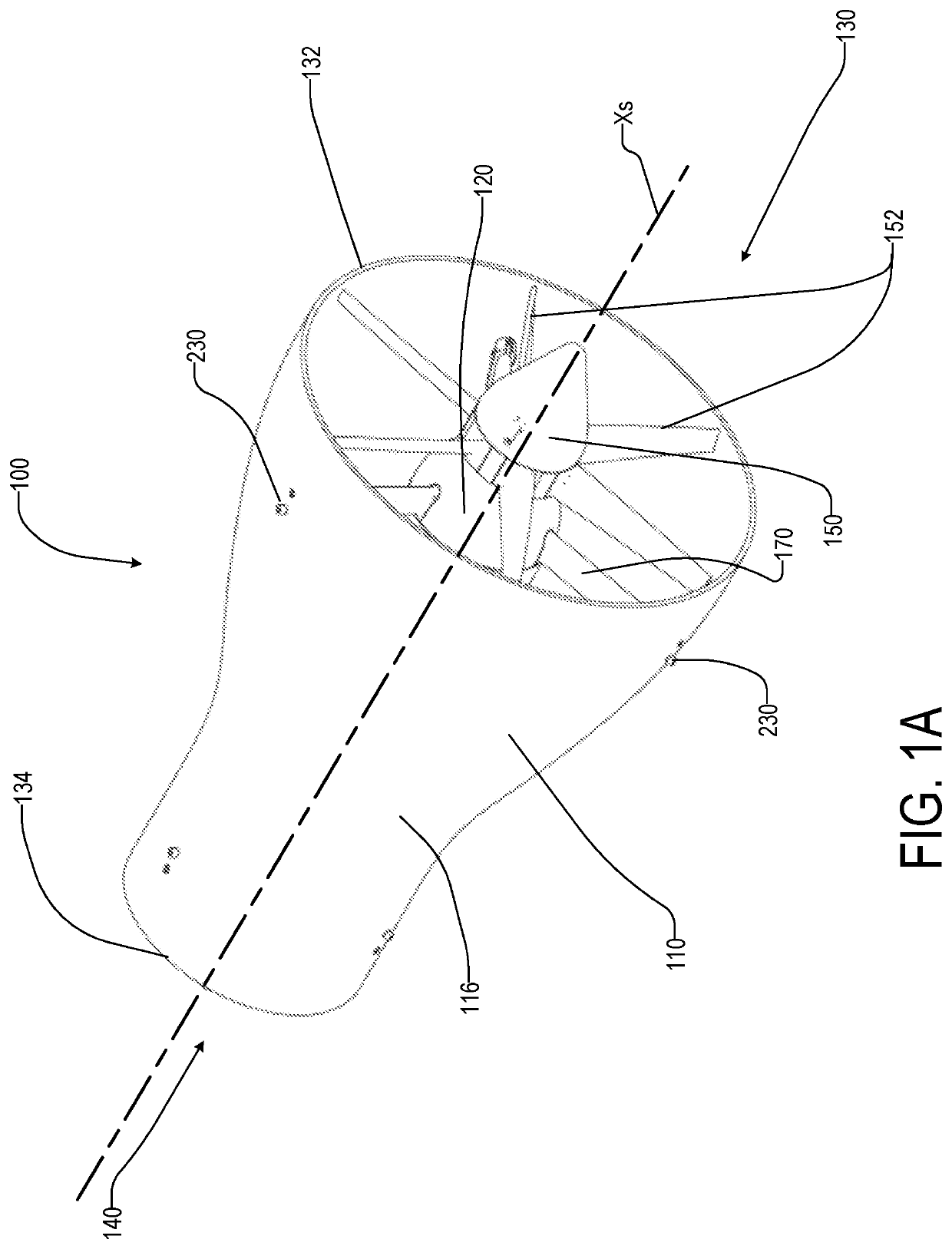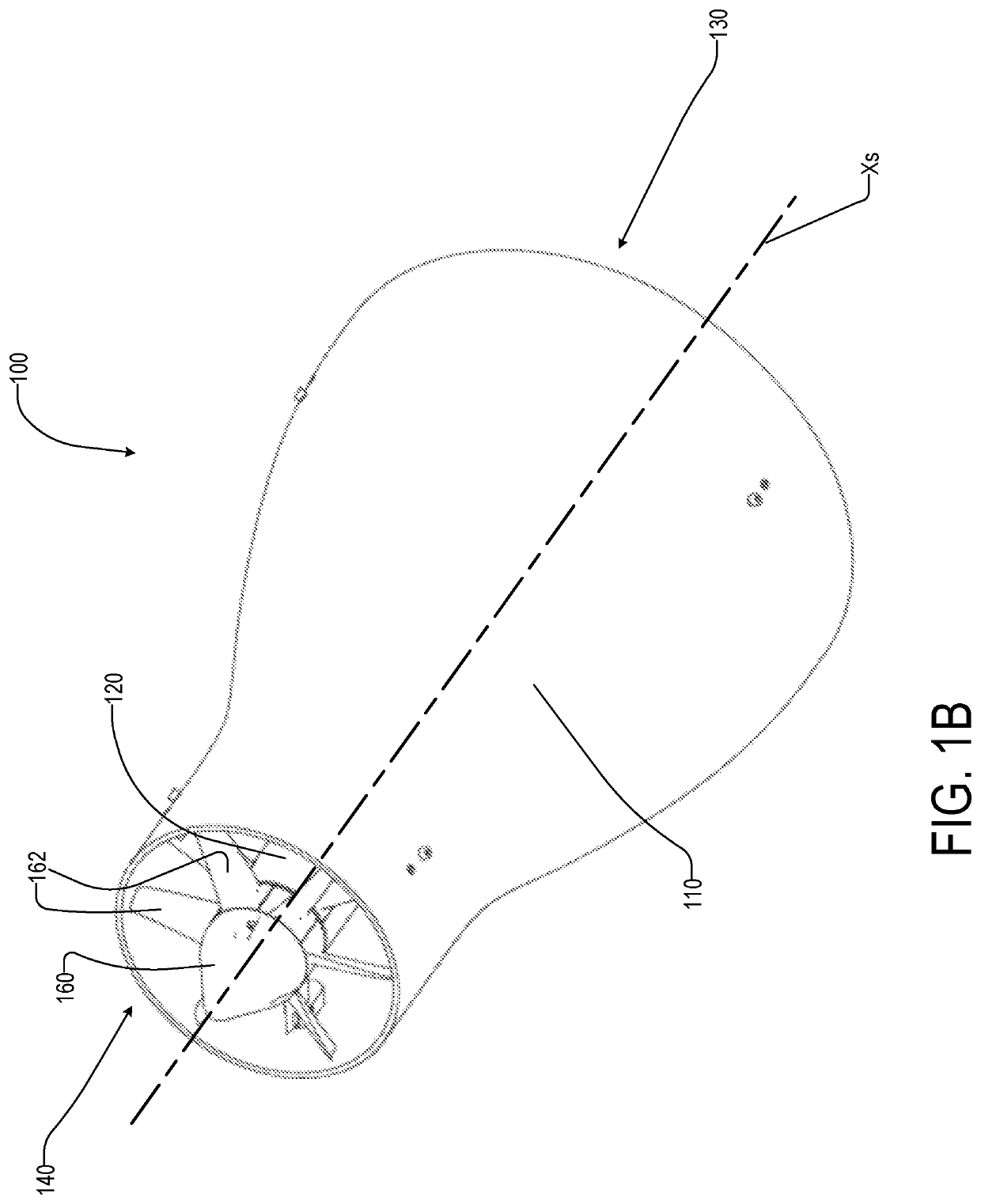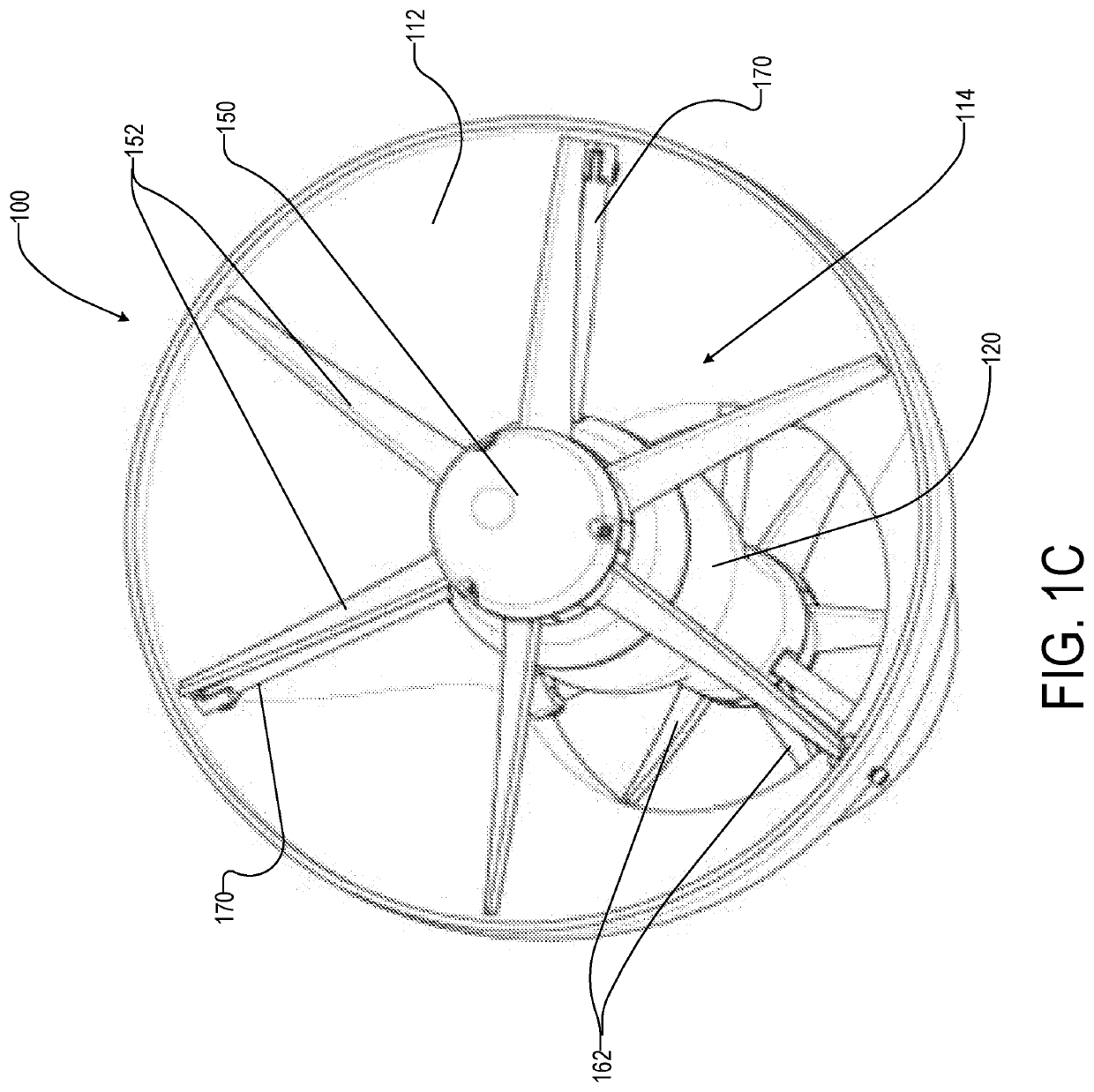Wind-powered generator
a generator and wind power technology, applied in the direction of machines/engines, mechanical energy handling, mechanical equipment, etc., can solve the problems of limited or even non-existent green energy energy sources of energy producers, limiting the ability of many consumers to capitalize on available, green energy sources, etc., to reduce skin friction
- Summary
- Abstract
- Description
- Claims
- Application Information
AI Technical Summary
Benefits of technology
Problems solved by technology
Method used
Image
Examples
Embodiment Construction
[0044]Reference will now be made in detail to the present exemplary embodiments of the disclosure, examples of which are illustrated in the accompanying drawings. Wherever possible, the same reference numbers will be used throughout the drawings to refer to the same or like parts.
[0045]FIGS. 1A-1C are a perspective views of an illustrative wind-powered generator 100 according to embodiments of the present disclosure. Wind-powered generator 100 may include, for example, a housing 110, a nacelle 120, an inlet rotor 150, an outlet rotor 160, and supporting members 170, among others.
[0046]The housing 110 includes an inlet 130 configured to permit entry of wind into housing 110, and an outlet 140 configured to permit exit of the wind from housing 110. Wind entering inlet 130 impinges upon portions (e.g., rotor blades 152) of the inlet rotor 150 mounted on nacelle 120 to drive the inlet rotor 150 in rotation based on a blade pitch of the rotor blades 152 of inlet rotor 150. Similarly, win...
PUM
 Login to View More
Login to View More Abstract
Description
Claims
Application Information
 Login to View More
Login to View More - R&D
- Intellectual Property
- Life Sciences
- Materials
- Tech Scout
- Unparalleled Data Quality
- Higher Quality Content
- 60% Fewer Hallucinations
Browse by: Latest US Patents, China's latest patents, Technical Efficacy Thesaurus, Application Domain, Technology Topic, Popular Technical Reports.
© 2025 PatSnap. All rights reserved.Legal|Privacy policy|Modern Slavery Act Transparency Statement|Sitemap|About US| Contact US: help@patsnap.com



